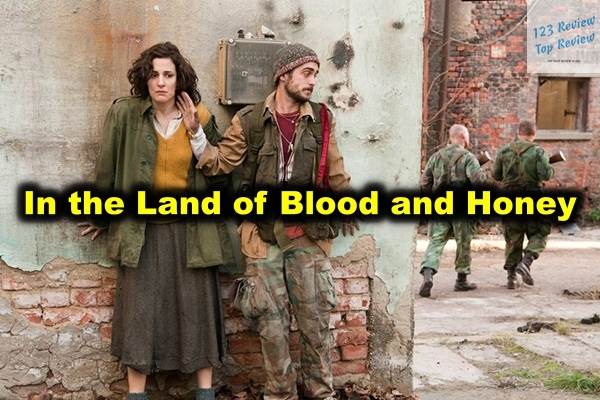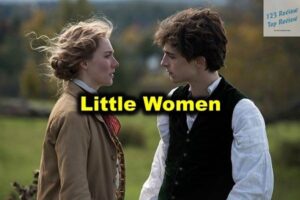“In the Land of Blood and Honey,” directed by Angelina Jolie, is a poignant and unsettling portrayal of the Bosnian War, a conflict that tore apart the former Yugoslavia in the early 1990s. The film, Jolie’s directorial debut, is both a harrowing exploration of the human condition in times of extreme crisis and a love story caught in the crossfire of ethnic violence. Through its unflinching depiction of war, the movie offers a lens into the atrocities committed during this brutal period, while also examining the emotional and psychological toll on those who lived through it. The film’s powerful narrative and artistic execution make it a significant work in the realm of war cinema, sparking both critical acclaim and controversy.
Themes and Motifs
The Impact of War on Humanity
One of the central themes of “In the Land of Blood and Honey” is the devastating impact of war on humanity. The film vividly portrays how war strips individuals of their humanity, reducing them to mere survival instincts. The characters, once neighbors and friends, are forced into opposing sides of a bloody conflict, where violence and cruelty become the norm. The film does not shy away from showing the brutal reality of war, where the lines between right and wrong blur, and where moral compromises become a part of daily life. Jolie’s portrayal of war is stark and unvarnished, forcing viewers to confront the dark side of human nature when civilization breaks down.

The film also delves into the psychological impact of war on individuals, showing how prolonged exposure to violence can lead to a loss of empathy and a hardening of the soul. Characters who were once kind and compassionate become desensitized to suffering, and in some cases, perpetrators of the very atrocities they once abhorred. This dehumanization is not limited to the soldiers on the battlefield but extends to civilians who are caught in the crossfire, often leading to profound and irreversible changes in their personalities.
Love and Conflict in a Turbulent Landscape
At the heart of “In the Land of Blood and Honey” is a complex love story set against the backdrop of war. The relationship between Ajla, a Bosnian Muslim woman, and Danijel, a Serbian soldier, is fraught with tension and conflict, as their love is tested by the brutal realities of the war. Their love story is emblematic of the broader ethnic tensions that define the conflict, where personal relationships are often sacrificed on the altar of nationalistic fervor.
The film explores how love can survive—or fail to survive—under the most extreme circumstances. Ajla and Danijel’s relationship is a microcosm of the broader conflict, reflecting the deep divisions and mistrust that characterize the war. Their love is both a source of strength and vulnerability, as they navigate the treacherous landscape of war-torn Bosnia. The film portrays love not as a simple or idealistic emotion, but as something complex, fraught with contradictions, and often overshadowed by the horrors of war.
Identity and Ethnicity in Times of Crisis
Identity and ethnicity play a crucial role in “In the Land of Blood and Honey,” as the characters grapple with their sense of self in a world where ethnic divisions are violently enforced. The film explores how these constructs are manipulated and weaponized during the Bosnian War, leading to widespread atrocities and ethnic cleansing. The characters’ identities are central to their roles in the conflict, often dictating their actions and fates.
Ajla, for instance, is constantly reminded of her identity as a Bosnian Muslim, which places her at odds with Danijel, a Serb. The war forces her to confront the painful realities of her ethnic background, as she becomes a target for persecution. Danijel, on the other hand, struggles with his loyalty to his father, a Serbian general, and his love for Ajla, which puts him in a moral quandary. The film raises important questions about the nature of identity—whether it is a source of pride, a burden, or something imposed by external forces.
The film also highlights the arbitrary and destructive nature of ethnic divisions, showing how people who once lived peacefully together are torn apart by the artificial constructs of nationalism and ethnicity. Through its characters, “In the Land of Blood and Honey” challenges viewers to consider the fluidity of identity and the dangers of allowing it to be defined by others.
Character Analysis
Protagonists and Their Journeys
The protagonists of “In the Land of Blood and Honey” are multifaceted characters whose journeys are shaped by the relentless forces of war. Ajla, played by Zana Marjanović, is a talented painter whose life is turned upside down by the outbreak of the war. Her journey is one of survival, as she navigates the dangers of being a Muslim woman in a conflict where her ethnicity makes her a target. Ajla’s character embodies resilience and strength, but also vulnerability, as she is forced to rely on Danijel for protection, even as she struggles with her feelings for him.
Danijel, portrayed by Goran Kostić, is a Serbian soldier caught between his duty to his father, a high-ranking military official, and his love for Ajla. His journey is marked by internal conflict, as he grapples with the atrocities committed by his fellow soldiers and his own role in the war. Danijel’s character is complex and morally ambiguous, reflecting the broader themes of the film. He is both a perpetrator and a victim of the war, struggling to reconcile his love for Ajla with the brutal realities of his position.
Throughout the film, both characters undergo significant transformations. Ajla becomes more hardened and determined as the war progresses, while Danijel becomes increasingly disillusioned with the conflict and his role in it. Their journeys are intertwined, with each influencing the other’s decisions and actions, ultimately leading to a tragic conclusion.
Supporting Characters and Their Roles
The supporting characters in “In the Land of Blood and Honey” are integral to the film’s narrative, providing additional perspectives on the war and its impact. Danijel’s father, General Nebojsa Vukojevich, played by Rade Šerbedžija, is a key figure in the Serbian military hierarchy, representing the older generation’s commitment to nationalist ideals. His relationship with Danijel is strained, as he embodies the ruthless, uncompromising nature of the war, often clashing with his son’s more conflicted views.
Other supporting characters include soldiers, civilians, and prisoners, each representing different aspects of the conflict. These characters add depth to the film, showing the various ways people cope with the horrors of war. Some are complicit in the violence, while others are victims or bystanders, highlighting the wide-ranging impact of the conflict on all segments of society.
The interactions between these characters and the protagonists serve to underscore the film’s themes, particularly the ways in which war alters human behavior and relationships. The supporting characters often act as catalysts for the protagonists’ actions, pushing them towards decisions that have far-reaching consequences.
The Evolution of Relationships Throughout the Story
The relationships in “In the Land of Blood and Honey” evolve dramatically over the course of the film, reflecting the changing dynamics of the war. Ajla and Danijel’s relationship is the most prominent, starting as a romance but becoming increasingly complicated as the war progresses. Their love is tested by external pressures and internal doubts, with trust becoming a major issue as both grapple with their roles in the conflict.
Other relationships in the film, such as those between soldiers and civilians, or between different ethnic groups, also undergo significant changes. The film portrays how war disrupts social bonds, turning friends into enemies and creating new alliances out of necessity. The evolution of these relationships is central to the film’s exploration of how war changes people and the world around them.
The film also examines how relationships are affected by power dynamics, particularly in the context of war. Danijel’s position as a soldier gives him power over Ajla, a power that complicates their relationship and adds layers of tension and ambiguity. The film does not offer easy answers but instead presents these relationships in all their complexity, forcing viewers to consider the many factors that influence human behavior in times of crisis.
Cinematic Techniques
Use of Cinematography to Convey Emotion
Cinematography in “In the Land of Blood and Honey” is a powerful tool used to convey the film’s emotional and thematic depth. Director of Photography, Dean Semler, employs a range of visual techniques to immerse the audience in the film’s bleak and oppressive atmosphere. The use of desaturated colors and stark lighting reflects the despair and desolation of the war-torn landscape, while the frequent use of close-ups allows viewers to connect deeply with the characters’ emotions.
The film also makes effective use of handheld camera work, particularly in scenes of intense conflict, to create a sense of immediacy and realism. This technique puts the audience in the midst of the action, making the horrors of war feel palpable and immediate. The camera often lingers on the characters’ faces, capturing the raw emotions that drive the narrative, from fear and anger to love and sorrow.
In quieter moments, the cinematography shifts to more static, composed shots that emphasize the stillness and silence of a world on the brink of destruction. These contrasts in visual style highlight the emotional and psychological extremes experienced by the characters, enhancing the film’s impact on the viewer.
Sound Design and Its Effect on Atmosphere
The sound design of “In the Land of Blood and Honey” is another crucial element that contributes to the film’s atmosphere. The use of sound is subtle yet powerful, with ambient noises such as distant gunfire, footsteps, and the rustling of leaves creating a constant sense of tension and unease. These sounds remind viewers of the ever-present danger that the characters face, even in moments of relative calm.
The film’s score, composed by Gabriel Yared, blends traditional Balkan music with more contemporary, dissonant tones, reflecting the film’s themes of cultural conflict and the clash between past and present. The music is used sparingly, allowing the natural sounds of the environment to dominate, which heightens the realism of the film and immerses the audience in the characters’ world.
In scenes of intense emotion, such as moments of confrontation or loss, the sound design becomes more pronounced, with the score swelling to underscore the drama. This use of sound enhances the emotional impact of the film, making the characters’ experiences feel more immediate and visceral.
Symbolism and Metaphors in Visual Storytelling
“In the Land of Blood and Honey” is rich in symbolism and metaphors, using visual elements to convey deeper meanings and themes. One of the most prominent symbols in the film is the contrast between light and darkness, which represents the duality of human nature and the conflict between good and evil. Scenes set in dark, shadowy environments often reflect the moral ambiguity of the characters’ actions, while moments of light symbolize hope and redemption.
Another powerful symbol in the film is the use of blood, which appears frequently throughout the narrative. Blood represents both the physical violence of the war and the deep emotional wounds inflicted on the characters. It also serves as a reminder of the shared humanity of the characters, despite the ethnic and political divisions that separate them.
The film also uses visual metaphors to explore the theme of entrapment and confinement. Characters are often shown in enclosed spaces, such as prison cells or small rooms, symbolizing their lack of freedom and the oppressive nature of the war. These visual elements reinforce the film’s themes and add layers of meaning to the story, making “In the Land of Blood and Honey” a rich and complex cinematic experience.
Impact and Reception
Critical Reception and Controversy
“In the Land of Blood and Honey” received a mixed reception from critics, with praise for its bold storytelling and powerful performances, but also criticism for its unflinching depiction of violence. Some critics lauded the film for its realism and its willingness to confront difficult subjects, while others found it overly bleak and disturbing. The film’s portrayal of the Bosnian War also sparked controversy, particularly in the Balkans, where some accused Jolie of taking sides in the conflict.
Despite the controversy, the film was recognized for its artistic achievements, earning a Golden Globe nomination for Best Foreign Language Film. Jolie’s direction was also praised for its sensitivity and attention to detail, particularly in her portrayal of the complex emotional and psychological dynamics of the characters. The film’s impact on audiences was significant, sparking discussions about the Bosnian War and the broader issues of war crimes and ethnic conflict.
Legacy and Influence on War Films
The legacy of “In the Land of Blood and Honey” lies in its uncompromising portrayal of war and its effects on humanity. The film has influenced subsequent war films by showing that it is possible to tell stories about conflict that are both deeply personal and universally resonant. Jolie’s focus on the human side of war, rather than just the political or military aspects, has set a precedent for other filmmakers to explore the emotional and psychological impact of conflict on individuals.
The film also serves as a reminder of the importance of telling stories about lesser-known conflicts, shedding light on the experiences of those who lived through them. By focusing on the Bosnian War, “In the Land of Blood and Honey” has helped to keep the memory of this tragic period alive, ensuring that the lessons learned are not forgotten.
Reflections on the Film’s Message
“In the Land of Blood and Honey” is ultimately a film about the consequences of hate and the resilience of the human spirit. Its message is a powerful one: that war is not just a political or military event, but a deeply human one, with far-reaching consequences for those caught in its grasp. The film challenges viewers to reflect on the nature of conflict and the ways in which it can dehumanize us, but also to consider the possibility of redemption and healing, even in the darkest of times.
Through its nuanced characters, gripping narrative, and evocative cinematography, “In the Land of Blood and Honey” leaves a lasting impression, encouraging audiences to think critically about the impact of war on individuals and societies. It is a film that resonates long after the credits roll, reminding us of the fragility of peace and the enduring power of love and compassion in the face of unimaginable suffering.
“In the Land of Blood and Honey” is more than just a film; it is a powerful statement on the horrors of war and the resilience of the human spirit. Angelina Jolie’s directorial debut is a must-watch for those interested in war cinema, offering a nuanced and deeply moving portrayal of a conflict that continues to have repercussions to this day.





